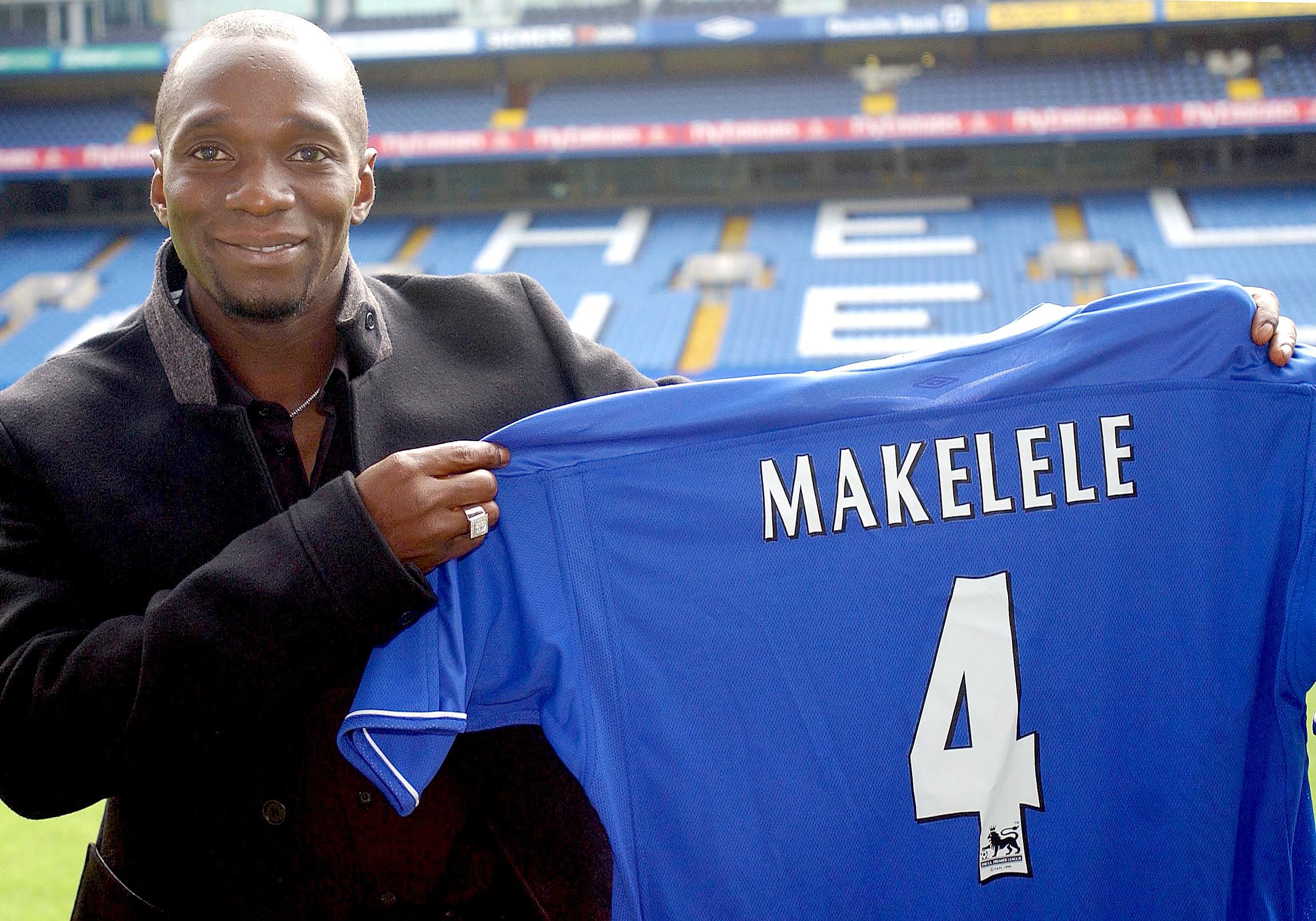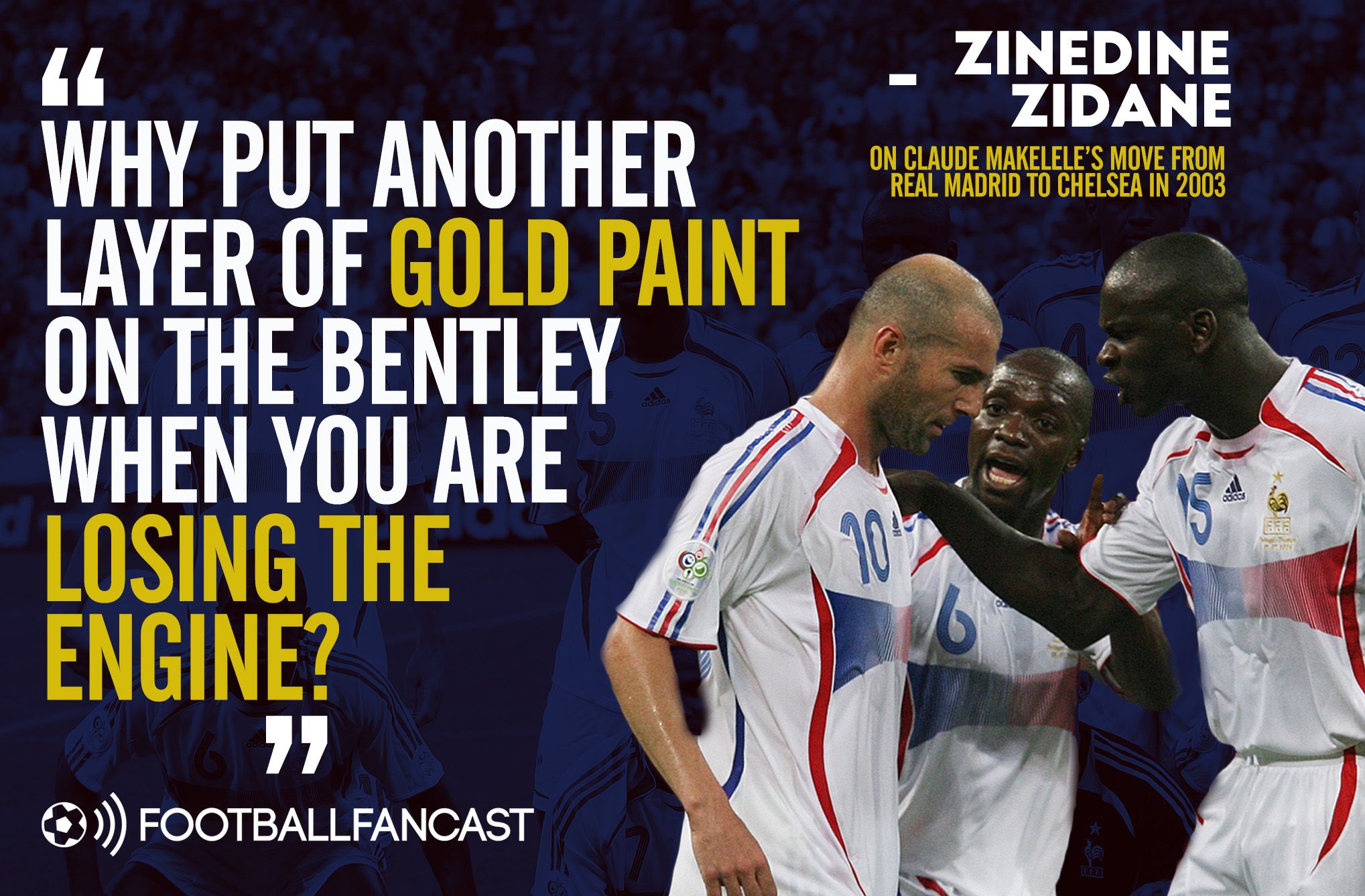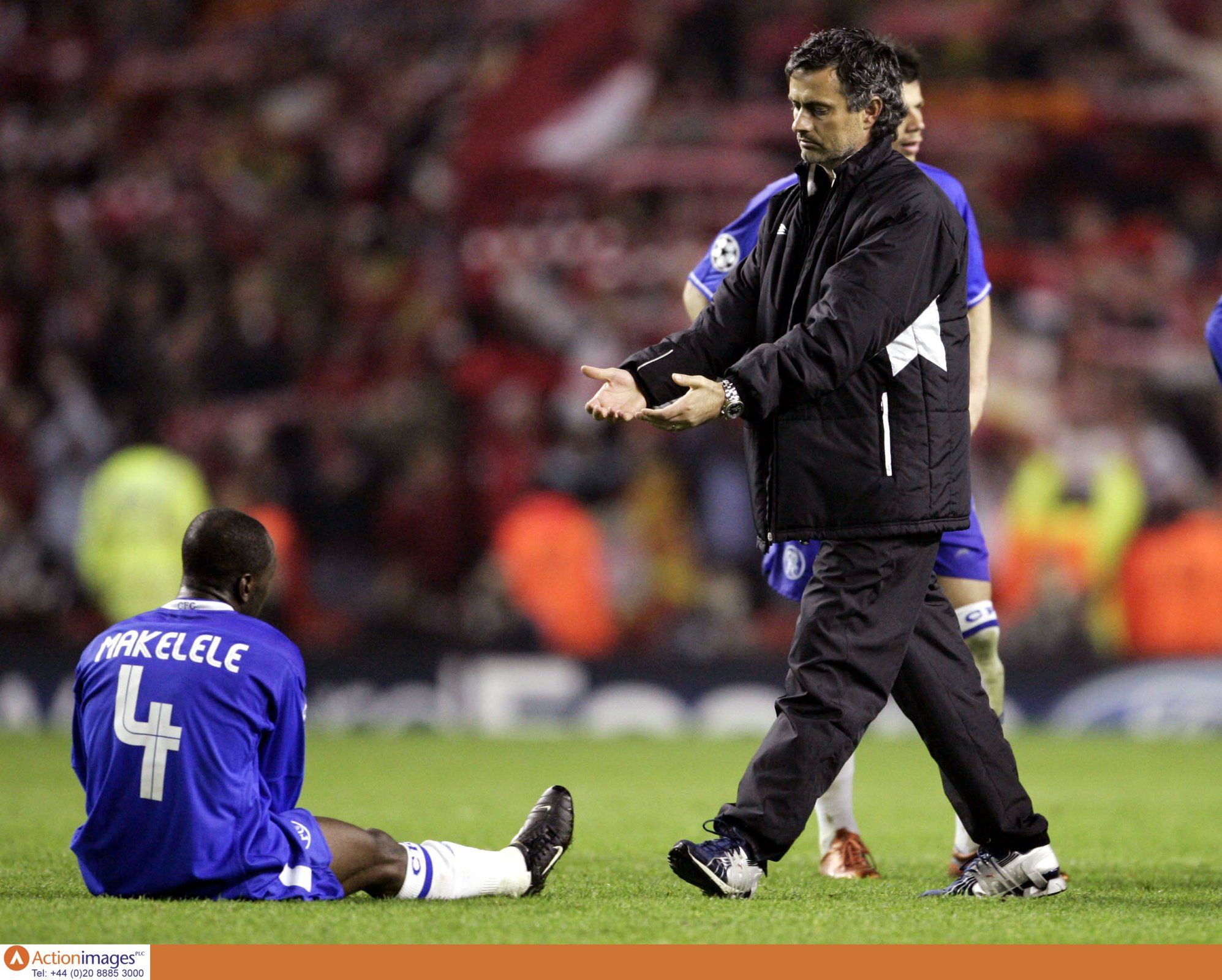Reigning PFA Player of the Year N’Golo Kante stands almost alone as just the second footballer to win the award who can’t be described as an attacking midfielder, a forward or a striker since the first Premier League season, when it was picked up by Aston Villa’s iconic centre-half Paul McGrath - the other exception being Manchester United captain Roy Keane.
But in many ways, Kante owes his award to a predecessor in his play-breaking role at Chelsea, who rarely received the individual accolades his performances and importance to the Blues’ successes unquestionably deserved. Of course, I’m talking about the one and only Claude Makelele.
To say defensive midfielders weren’t appreciated when Makelele made the move from Real Madrid to Stamford Bridge would perhaps be a little unfair. But it’s certainly true that the service they provided was rarely recognised by the mainstream, and in any case most of European football still based its game around 4-4-2, utilising two box-to-box midfielders, at the point when Makelele joined the Premier League.
"We will not miss Makélelé. His technique is average, he lacks the speed and skill to take the ball past opponents, and ninety percent of his distribution either goes backwards or sideways. He wasn't a header of the ball and he rarely passed the ball more than three metres. Younger players will arrive who will cause Makélelé to be forgotten."
Real Madrid club president Florentino Perez
Makelele certainly wasn’t one of those and club president Florentino Perez hardly had a kind word to say about the Frenchman upon swapping him for Manchester United’s David Beckham in summer 2003, as part of the Galaticos transfer policy. Team-mate Zinedine Zidane though, saw the situation wholly differently - the greatest, most gracious and creative player in the world during his era, acknowledging the intrinsic importance of an unsung team-mate who sat at the opposite end of the midfield spectrum.
[ad_pod ]
Perez and the wider public hadn’t quite caught up with that way of thinking, but it’s amazing how changing tactical trends can go on to define careers, or at the very least revolutionise opinions of specific players; suddenly they’re the perfect fit for a new formation quickly rising in popularity, or they’re a square peg being shoehorned into a round hole. Fortuitously for Makelele, Jose Mourinho’s implementation of 4-3-3 at Chelsea put him firmly into the former camp.
Here’s the trailblazing manager of world football, the Special One by his own description, sacrificing a striker for a midfielder who - according to Perez - very rarely deviated from passing the ball three metres backwards or sideways, lacking the speed and skill to beat defenders. It implored the wider footballing audience to sit up and take notice of why Mourinho revered Makelele so highly. But it certainly helped that the France international was ever-present in a Chelsea team that knocked the Invincibles off their perch to claim consecutive Premier League titles while reaching the semi-finals of the Champions League twice in three years.
The intelligence in the simplicity and consistency of what Makelele did at the base of Chelsea’s engine room became so widely lauded that by the time he left west London in 2008, the defensive midfield slot was unanimously referred to as the ‘Makelele role’ - a whole position named after a player that just five years previous had been served the most severe of character assassinations from one of the most powerful men in club football.
Of course, Kante is by no means a carbon copy of Makelele. There is a far greater explosiveness to his game and a far more active approach to winning the ball back. Whereas Makelele waited for attacking players to eventually be funnelled into his path, finding a surprisingly impenetrable 5 foot 6 wall in front of them, Kante hunts the ball down, sensing the opportune moment to nick it off opposition toes. Ironically too, while Makelele was a central figure in the rising popularity of the three-man midfield, Kante has emerged as the ultimate antidote to its effectiveness - it’s no coincidence that the two title-winning sides he’s played in, Leicester City and Chelsea, both deployed just two in the engine room.
Nonehtless, both players belong into that bracket of unsung, the type of midfielder expected to do the unglamorous, dirty work that allows the others around them to flourish. Makelele though, only rarely earned official credit for that - a place in the 2005 FIFAPro World XI and a Players’ Player of the Year award at Chelsea a year later were the only individual awards of his hayday.
But by the time N’Golo Kante turned up in the Premier League with Leicester, some twelve years after Makelele, English football wasn’t prepared to make the same mistake. Tellingly of how vastly opinions had changed in that time, the only player Premier League clubs prized away from Leicester’s title-winning side was the ball-winning midfielder. And one year after that, upon becoming the first player to win consecutive Premier League titles with two different clubs, Kante joined Keane and McGrath in the exclusive club of non-attacking players to be crowned the PFA Player of the Year during the Premier League era.
As Makelele celebrates his 45th birthday today, it's almost impossible to overstate the impact he had on English football. He was not only essential to making the Premier League as competitive is today as one of the most important players in Chelsea's early rise under Roman Abramovich, but he also came to dictate tactical thinking - not only in England but around Europe - for many years to come.
Perhaps the ultimate impact though is how we now treat ball-winning midfielders. While the Makelele role doesn't quite exist in the traditional sense anymore, playing behind two central midfielders, there's a far greater appreciation and understanding of the balance and qualities players like Makalele inject into teams. The unsung heroes aren't quite as unsung these days, something the reigning PFA Player of the Year pays direct testament to.





